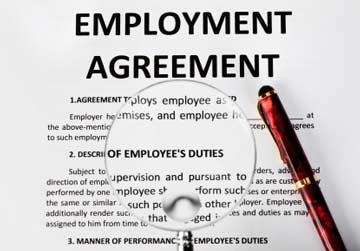
The Equal Employment Opportunity Commission has unveiled its strategy for enforcing workplace discrimination laws over the next few years. Here’s what employers need to look out for.
In its recently released draft strategic plan, the agency made it clear that the aggressive approach it’s been taking during the Obama administration won’t be changing, despite budget cuts.
Plan on EEOC continuing to focus on what it calls “systemic discrimination” — situations in which a pattern of hiring/screening procedures could prove discriminatory for a certain group of employees or applicants.
Example: The recent case in which Pepsi Beverages agreed to pay $3.13 million and provide job offers and training to resolve a charge of race discrimination.
An EEOC investigation found that the criminal background check policy formerly followed by Pepsi discriminated against African Americans in violation of federal anti-bias laws.
Not too tough to figure out why the agency wants to laser in on the “systemic” cases: They involve the biggest number of workers, they can potentially generate the biggest settlements — and (forgive our cynicism) they get the most publicity.
A ‘holistic’ approach
Another significant development outlined in EEOC’s strategic plan: The agency plans to streamline the way it investigates and litigates complaints.
In the arcane language of the feds, EEOC officials describe the process as creating an “integrated, holistic approach to enforcement from beginning to end, without separating the investigation and conciliation state of the (agency’s) work from its litigation stage.”
What that likely means for employers: More paperwork. If an employee files an EEOC claim, the agency will probably want more documentation earlier in the process than in the past.
‘Targeted, equitable relief’
One more ominous development in the strategic plan: The agency says it’ll be focusing on “targeted, equitable relief” not just to individual complainants, but to “all employees and job seekers.”
Although the plan document doesn’t specify exactly what form that relief will take, it’s expected to involve requiring more supervisor training and outside monitoring of employment practices.
Our HR editorials undergo rigorous vetting by HR and legal experts, ensuring accuracy and compliance with relevant laws. With over two decades of combined experience in Human Resources thought leadership, our editorial team offers profound insights and practical solutions to real-world HR challenges. This expertise not only enhances the credibility of our content but also makes HRMorning a dependable resource.
For more information, read our editorial policy.
Why do we need your credit card for a free trial?
We ask for your credit card to allow your subscription to continue should you decide to keep your membership beyond the free trial period. This prevents any interruption of content access.
Your card will not be charged at any point during your 21 day free trial
and you may cancel at any time during your free trial.
During your free trial, you can cancel at any time with a single click on your “Account” page. It’s that easy.
